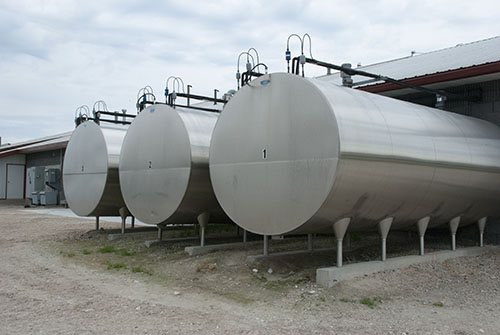
Milk culturing can be used to identify mastitis pathogens, troubleshoot milk quality problems, monitor pasteurizer systems and more. To get the most benefit from the results, one should keep the end goal in mind even before taking the sample.
Culturing can be done on farm or through a laboratory. Erin Royster, D.V.M., is one of the faculty advisors at the University of Minnesota Laboratory for Udder Health, an accredited laboratory that processed more than 100,000 samples in the last 12 months. During her presentation at the Minnesota Dairy Health Conference, she shared three key factors any farmer or veterinarian should think through before sending in a sample to be cultured.
Ask the right questions
What are you trying to find out? What will you do with the information? Test results can be used to make quarter, cow or herd-level decisions. Knowing the decision you hope to make will guide test selection and define what the results will mean to you. It can also save you time and money.
For example, if you are wondering if you have a contagious pathogen in the herd, you should submit a bulk tank culture. If you want to know what pathogens are causing a recent spike in SCC, you should send in a composite sample of cows with high somatic cell counts for a full mastitis culture. Want to know what pathogen is causing one cow's recurrent mastitis? Take a quarter sample and do a full mastitis culture. If you specifically want to know if a cow has Staph. aureus because you plan to cull her if she does, you should do a composite sample and run a staph only culture.
"The best time to ask for help is before you collect the sample," Royster said. She advised people to contact their lab before collecting and submitting samples if they have any questions.
Collect the best sample
The goal of milk diagnostic testing is to identify organisms found in a cow's udder. You don't want to identify organisms found on teat skin, hands or the environment, Royster explained. If you are looking for some information on how to collect clean samples, a sample collection guide is available here.
The best sample is also the right sample, Royster said. Quarter milk samples are best for mastitis diagnostics in one cow. Composite samples work fairly well for contagious pathogen screening in a herd and for cow-level decision making; however, the results can be difficult to interpret since they almost always grow multiple organisms. Bulk tank samples work best for finding contagious pathogens at the herd level.
Understand the results
If you are careful and submit the right sample following proper sample collection techniques, the results you receive should provide accurate information you can act on. If you are unsure what to do with those results, or what they mean, call the lab or your veterinarian, Royster said. Individuals that work with culturing on a regular basis are great resources that can help you better utilize those results on the farm.

The author is an associate editor and covers animal health, dairy housing and equipment, and nutrient management. She grew up on a dairy farm near Plymouth, Wis., and previously served as a University of Wisconsin agricultural extension agent. She received a master's degree from North Carolina State University and a bachelor's from University of Wisconsin-Madison.








